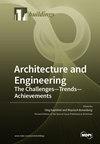为建筑增添绿色:基于室内垂直绿化的青少年情绪促进实证研究
IF 3.1
3区 工程技术
Q2 CONSTRUCTION & BUILDING TECHNOLOGY
引用次数: 0
摘要
好的建筑空间设计能给使用者带来积极的情绪刺激和放松,但很少有研究探讨建筑空间设计中的量化指标及其对使用者情绪的影响。本研究以建筑中的直角夹层界面系统为例,通过比较连接值、融合度、人口聚集度等空间量化差异,指导下一步的垂直绿化模拟实验。我们招募了 80 名青少年志愿者,根据墙体类型分为对照组(人工装饰墙)和实验组(绿化墙)。我们比较了他们的生理和心理指标,包括血压和血氧,以及心理指标,包括 POMS 和 SIAI-S 量表。然后,我们对垂直绿化元素进行了预测性因素判断。对建筑内部空间的量化显示出参数变化的一致性,中心区域是连通性、融合性和人群聚集值的区域。实验结束后,实验组的舒张压、收缩压和心率显著下降(P = 0.00),紧张、愤怒、疲劳、抑郁和恐慌显著下降(P = 0.00)。利用逐步线性探索法对垂直绿化元素与情绪促进之间的定量关系进行了研究,结果表明,"藤蔓 "元素是舒张压、T-A 情绪和 SIAI-S 值的重要预测因素。研究结果丰富了各种空间体验界面系统的室内优化和创造拓展路径,并通过室内垂直空间绿化对青少年情感的影响,进一步为城市室内绿化建设规划和绿化景观设施规划提供指导。本文章由计算机程序翻译,如有差异,请以英文原文为准。
Adding Green to Architectures: Empirical Research Based on Indoor Vertical Greening of the Emotional Promotion on Adolescents
Good architectural space design can bring positive emotional stimulation and relaxation to users, but few studies have investigated the quantitative indicators in architectural space design and their impact on user emotions. This study takes the right-angle sandwich interface system in architecture as an example to guide the next vertical greening simulation experiment by comparing the spatial quantitative differences in connection value, integration degree, and population agglomeration. Eighty adolescent volunteers were recruited into a control (artificial decorative wall) and experimental (green wall) group based on wall type. We compared their physiological and psychological indicators, including blood pressure and blood oxygen, and psychological indicators, including POMS and SIAI-S scales. Then, we made predictive factor judgements on vertical green elements. The quantification of the interior space of the building showed consistency in parameter changes, with the central area being the area of connectivity, integration, and crowd aggregation values. After the experiment, the experimental group showed a significant decrease in diastolic blood pressure, systolic blood pressure, and heart rate (p = 0.00) and a significant decrease in tension, anger, fatigue, depression, and panic (p = 0.00). The quantitative relationship between vertical greening elements and emotional promotion using stepwise linear exploration shows that the “vine” element is a significant predictive factor for diastolic blood pressure, T-A emotion, and SIAI-S values. The results enrich the indoor optimization and creation expansion paths of interface systems for various spatial experiences and further provide guidance for urban indoor green construction plans and green landscape facility planning via the emotional influence of indoor vertical space greening on young people.
求助全文
通过发布文献求助,成功后即可免费获取论文全文。
去求助
来源期刊

Buildings
Multiple-
CiteScore
3.40
自引率
26.30%
发文量
1883
审稿时长
11 weeks
期刊介绍:
BUILDINGS content is primarily staff-written and submitted information is evaluated by the editors for its value to the audience. Such information may be used in articles with appropriate attribution to the source. The editorial staff considers information on the following topics: -Issues directed at building owners and facility managers in North America -Issues relevant to existing buildings, including retrofits, maintenance and modernization -Solution-based content, such as tips and tricks -New construction but only with an eye to issues involving maintenance and operation We generally do not review the following topics because these are not relevant to our readers: -Information on the residential market with the exception of multifamily buildings -International news unrelated to the North American market -Real estate market updates or construction updates
 求助内容:
求助内容: 应助结果提醒方式:
应助结果提醒方式:


